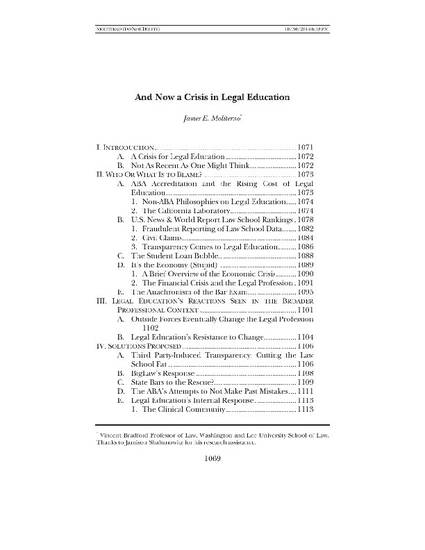
The current crisis in legal education coincides with a crisis in the practice of law. Law practice has changed as a result of technology, globalization, and economic pressures. The market for legal education's product, law graduates, have diminished. Law schools cannot remain the same in this environment. Except for a very small number of elite schools, those that do not adjust are at serious risk of failing.
An economic change has taken place against a system in which mostly corporate clients willingly paid for the training of beginners at major law firms. Law firms could absorb those costs if partners allowed their incomes to shrink, but so far they are not doing so. Billing for newly minted associates' time is substantially decreasing. Far fewer law graduate find jobs in major firms, and the few who do are not given comprehensive training. Everyone from law firms and their clients to prospective law students and even to the New York Times has turned to the law schools to say, "It's your turn; you have to do this for us." The cost once borne by corporate clients of law firm is now increasingly borne by law schools. The call for law schools to produce "practice-ready" lawyer arrives as the cost of legal education is already too high and application numbers are too low for the current supply of legal education seats. Legal education can only hope to maintain relevance if it can forge partnership with the profession's practicing branch. Another suggested antidote is the two-year J.D., or two-year legal education bar eligibility.
